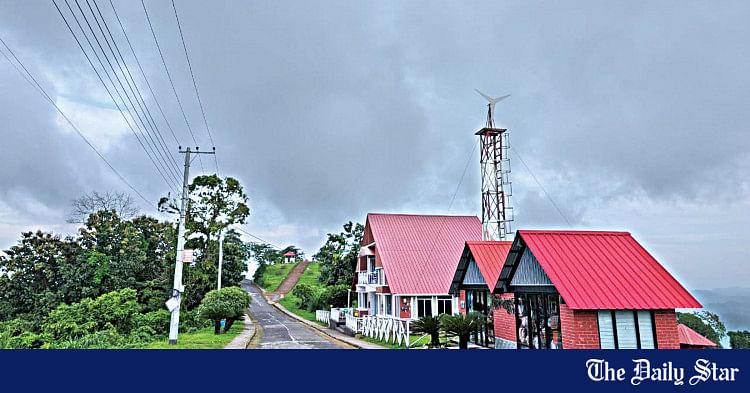Saif
Senior Member
- Jan 24, 2024
- 12,717
- 7,061
- Origin

- Residence

- Axis Group

- Copy to clipboard
- Thread starter
- #25

Tourists welcome, but Saint Martin’s remains deserted
Saint Martin’s Island officially opened for tourism at the start of November. Yet, there is not a single holidaymaker in sight as tour operators await permission to ferry visitors between the island and the mainland.
Tourists welcome, but Saint Martin’s remains deserted

Tourists have been officially allowed to visit the sandy shores of Saint Martin’s Island since the start of November, but the beaches around Bangladesh’s only coral island remain largely deserted. Visitors will not be allowed to stay on the island overnight in November due to government restrictions, which locals say is one of the reasons for the lack of holidaymakers. PHOTO: COLLECTED
Saint Martin's Island officially opened for tourism at the start of November. Yet, there is not a single holidaymaker in sight as tour operators await permission to ferry visitors between the island and the mainland.
Alongside this, various other issues have also emerged.
Recent disruptions in the electricity supply process have piled misery on the 12,000 people who reside on the small island off the southeast coast of the country.
Additionally, there are frequent disruptions in naval communications used by tour operators due to the cross-border conflict in neighbouring Myanmar.
These factors have created an air of uncertainty that has left residents of Bangladesh's only coral island, most of whom rely on the hospitality industry for their livelihoods, in a bind.
In previous years, tourists were officially barred from visiting the island for six months of the year, only being allowed to visit from November to April.
However, in late October this year, the interim government decided to allow tourism for just three months of the year as part of efforts to protect the native biodiversity.
Tourists will now be allowed to visit the island in November but will not be permitted to stay overnight. In December and January, tourists can stay overnight, but the number of visitors on the island will be capped at 2,000 per day.
Hossainul Islam Bahadur, secretary of the cruise ship owners' association that operates along the Teknaf-Saint Martin's Island route, said they had applied to the Bangladesh Inland Water Transport Authority for permission to ply tourist ships to the island from jetties in Teknaf and Inani. But their efforts have not yet yielded results.
"They are asking us to get permission from the Department of Environment (DoE), so we are trying to do that," he said.
"We will not move our tourist vessels until we get permission."
Even if the permission is granted, tourists remain reluctant to travel to the island without the scope to stay overnight as the two-way journey currently takes around 10-12 hours.
"Plying tourist ships from Teknaf to Saint Martin's is risky due to the conflict in bordering areas," said Shibliu Azam Koreshi, owner of St Martin Resort.
"But the journey from Cox's Bazar takes at least 5-6 hours, so people will not be interested in coming to the island if they have to return the same day."
He added that the government's decision was weighing heavily on the minds of residents.
"The whole tourism business, as well as our investment, has fallen into uncertainty due to the government's decision. The worst sufferers will be the island's inhabitants, 80 percent of whom are dependent on tourism," Koreshi lamented.
Tayeb Ullah, who runs his family's resort on the island, said the education of his younger brother and sister as well as their family's livelihood were tied to the income generated from tourists.
"We are deeply concerned about the decision to curb tourism. We survive through the months when tourism is banned using the income generated from holidaymakers during other times of the year. Tourism is the main source of income for locals. If it is restricted, most of us will find it hard to live a decent life".
Abdur Aziz, another island resident, said that the pre-paid meter recharge facility that allows customers to buy electricity from the only source of power on the island -- a solar plant operated by Blue Marin Energy Ltd -- had been suspended for a week until Friday, leaving many on the island without electricity.
Tayeb added: "On Friday, the electricity supply shut off completely. After people agitated, Blue Marin Energy restored electricity on Saturday morning."
Officials of Blue-Marine Energy said the situation was caused by a problem with the server software related the project, controlled by Scoob Technology Ltd. The officials added that the issue had been resolved.
Tourists have been officially allowed to visit the sandy shores of Saint Martin’s Island since the start of November, but the beaches around Bangladesh’s only coral island remain largely deserted. Visitors will not be allowed to stay on the island overnight in November due to government restrictions, which locals say is one of the reasons for the lack of holidaymakers. PHOTO: COLLECTED
Saint Martin's Island officially opened for tourism at the start of November. Yet, there is not a single holidaymaker in sight as tour operators await permission to ferry visitors between the island and the mainland.
Alongside this, various other issues have also emerged.
Recent disruptions in the electricity supply process have piled misery on the 12,000 people who reside on the small island off the southeast coast of the country.
Additionally, there are frequent disruptions in naval communications used by tour operators due to the cross-border conflict in neighbouring Myanmar.
These factors have created an air of uncertainty that has left residents of Bangladesh's only coral island, most of whom rely on the hospitality industry for their livelihoods, in a bind.
In previous years, tourists were officially barred from visiting the island for six months of the year, only being allowed to visit from November to April.
However, in late October this year, the interim government decided to allow tourism for just three months of the year as part of efforts to protect the native biodiversity.
Tourists will now be allowed to visit the island in November but will not be permitted to stay overnight. In December and January, tourists can stay overnight, but the number of visitors on the island will be capped at 2,000 per day.
Hossainul Islam Bahadur, secretary of the cruise ship owners' association that operates along the Teknaf-Saint Martin's Island route, said they had applied to the Bangladesh Inland Water Transport Authority for permission to ply tourist ships to the island from jetties in Teknaf and Inani. But their efforts have not yet yielded results.
"They are asking us to get permission from the Department of Environment (DoE), so we are trying to do that," he said.
"We will not move our tourist vessels until we get permission."
Even if the permission is granted, tourists remain reluctant to travel to the island without the scope to stay overnight as the two-way journey currently takes around 10-12 hours.
"Plying tourist ships from Teknaf to Saint Martin's is risky due to the conflict in bordering areas," said Shibliu Azam Koreshi, owner of St Martin Resort.
"But the journey from Cox's Bazar takes at least 5-6 hours, so people will not be interested in coming to the island if they have to return the same day."
He added that the government's decision was weighing heavily on the minds of residents.
"The whole tourism business, as well as our investment, has fallen into uncertainty due to the government's decision. The worst sufferers will be the island's inhabitants, 80 percent of whom are dependent on tourism," Koreshi lamented.
Tayeb Ullah, who runs his family's resort on the island, said the education of his younger brother and sister as well as their family's livelihood were tied to the income generated from tourists.
"We are deeply concerned about the decision to curb tourism. We survive through the months when tourism is banned using the income generated from holidaymakers during other times of the year. Tourism is the main source of income for locals. If it is restricted, most of us will find it hard to live a decent life".
Abdur Aziz, another island resident, said that the pre-paid meter recharge facility that allows customers to buy electricity from the only source of power on the island -- a solar plant operated by Blue Marin Energy Ltd -- had been suspended for a week until Friday, leaving many on the island without electricity.
Tayeb added: "On Friday, the electricity supply shut off completely. After people agitated, Blue Marin Energy restored electricity on Saturday morning."
Officials of Blue-Marine Energy said the situation was caused by a problem with the server software related the project, controlled by Scoob Technology Ltd. The officials added that the issue had been resolved.












